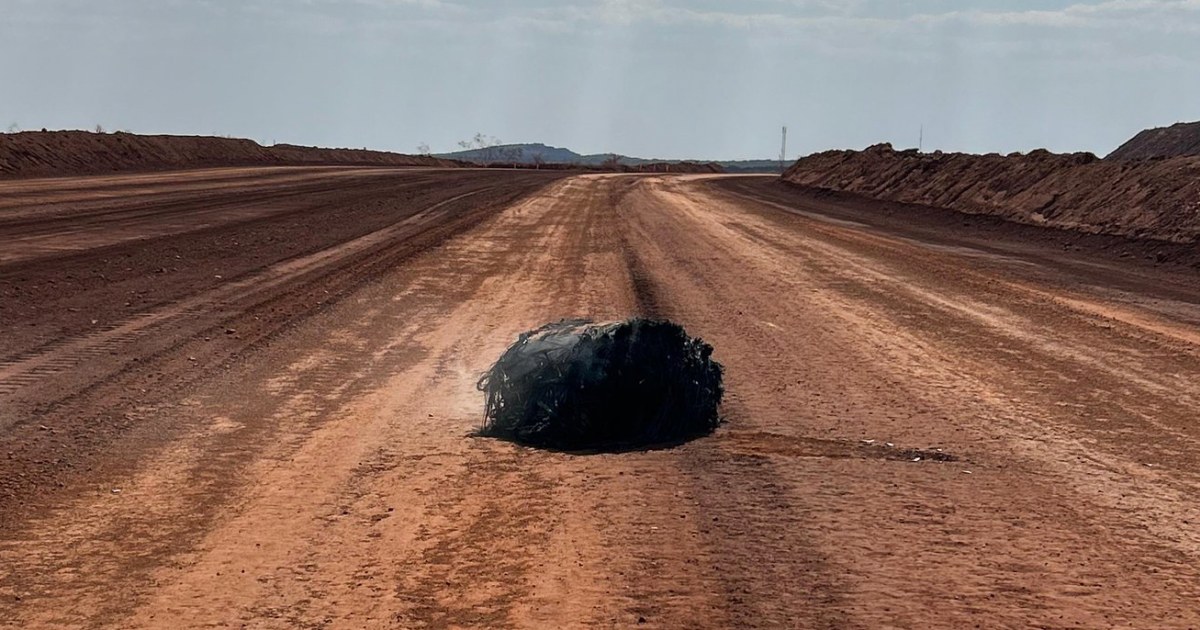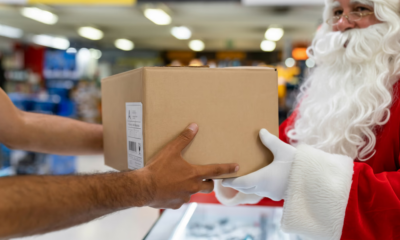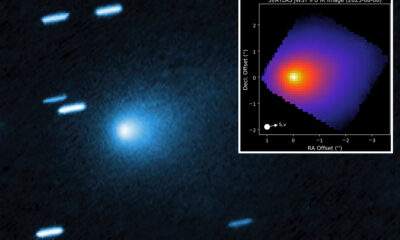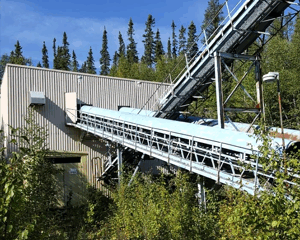World
Large Chunk of Suspected Space Debris Discovered in Australia

A significant piece of suspected space debris has been located in a remote area of the Australian desert. The discovery was confirmed by the Australian Space Agency on Monday, with the charred object found in the Pilbara region of Western Australia. While officials have not definitively identified the object, they suspect it may be a spent rocket component.
The agency stated, “The debris is likely a propellant tank or pressure vessel from a space launch vehicle,” in a post on X. Specific details regarding the size and weight of the object have not been disclosed, but the agency is collaborating with local authorities and other space organizations to understand the nature and origin of the debris. As of now, the Australian Space Agency has not responded to inquiries from NBC News for further information.
The object was initially discovered on Saturday by workers from a nearby mine along a remote access road, according to a report from Sky News. Local authorities have indicated that they do not believe the debris presents any threat to public safety. However, NBC News has not independently verified these claims.
Space debris, including spent rocket parts and defunct satellites, typically burns up upon re-entering the Earth’s atmosphere. Yet, remnants can occasionally survive this intense process. It is relatively uncommon for space debris to land on land, particularly since much of the Earth’s surface is covered by oceans, making incidents like this one rare.
Concerns about space debris have escalated in recent years as the frequency of space launches increases. For example, a 40-kilogram piece of debris was found on a mountain trail in North Carolina last summer, later identified as part of the service module from a SpaceX Crew Dragon capsule that returned astronauts from the International Space Station. Additionally, a small fragment weighing approximately 0.7 kilograms tore through a home in Naples, Florida, in March 2024, later determined to be from a cargo pallet intentionally released from the International Space Station.
As of now, tens of thousands of larger pieces of space junk, along with millions of smaller fragments, clutter low Earth orbit. These objects travel at speeds of up to 29,000 kilometers per hour (18,000 mph), posing risks to operational spacecraft and astronauts aboard the International Space Station. Experts have consistently warned about the dangers of overcrowding in space, prompting organizations like NASA to invest in research and technologies aimed at mitigating space debris.
The Australian Space Agency has reiterated its commitment to the long-term sustainability of outer space activities. It emphasized the importance of debris mitigation, ensuring that discussions about space waste remain a priority on the international stage. As investigations continue, the situation highlights the growing challenges associated with space exploration and debris management.
-

 Lifestyle1 week ago
Lifestyle1 week agoSend Holiday Parcels for £1.99 with New Comparison Service
-

 Science2 months ago
Science2 months agoUniversity of Hawaiʻi Leads $25M AI Project to Monitor Natural Disasters
-

 Science2 months ago
Science2 months agoInterstellar Object 3I/ATLAS Emits Unique Metal Alloy, Says Scientist
-

 Science2 months ago
Science2 months agoResearchers Achieve Fastest Genome Sequencing in Under Four Hours
-

 Business2 months ago
Business2 months agoIconic Sand Dollar Social Club Listed for $3 Million in Folly Beach
-

 Politics2 months ago
Politics2 months agoAfghan Refugee Detained by ICE After Asylum Hearing in New York
-

 Business2 months ago
Business2 months agoMcEwen Inc. Secures Tartan Lake Gold Mine Through Acquisition
-

 Health2 months ago
Health2 months agoPeptilogics Secures $78 Million to Combat Prosthetic Joint Infections
-

 Lifestyle2 months ago
Lifestyle2 months agoJump for Good: San Clemente Pier Fundraiser Allows Legal Leaps
-

 Science2 months ago
Science2 months agoMars Observed: Detailed Imaging Reveals Dust Avalanche Dynamics
-

 Health2 months ago
Health2 months agoResearcher Uncovers Zika Virus Pathway to Placenta Using Nanotubes
-

 Entertainment2 months ago
Entertainment2 months agoJennifer Lopez Addresses A-Rod Split in Candid Interview








